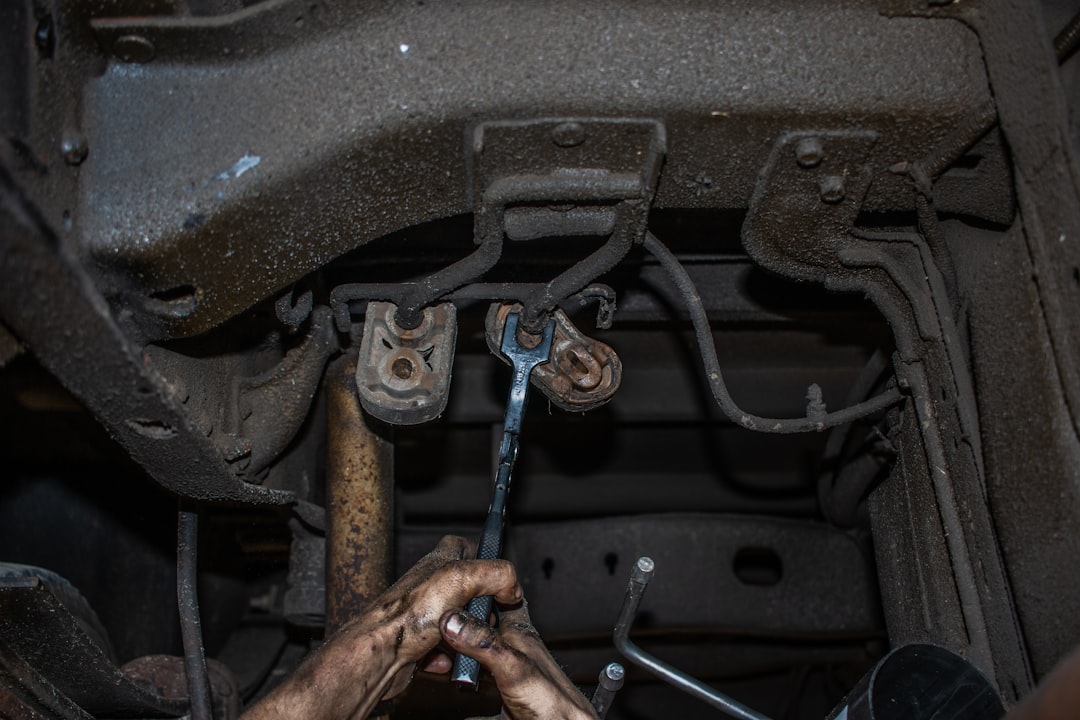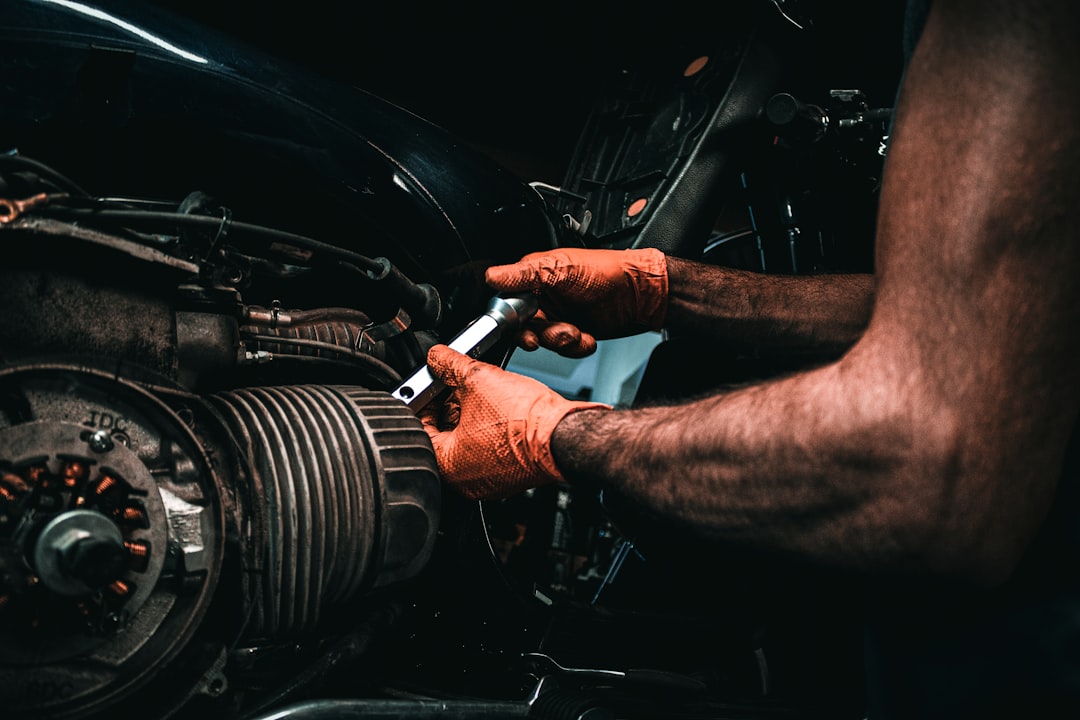

Engage prospects with a scan and streamline customer engagement with FREE QR code marketing tools by Sona – no strings attached!
Create a Free QR CodeFree consultation

No commitment

Engage prospects with a scan and streamline customer engagement with FREE QR code marketing tools by Sona – no strings attached!
Create a Free QR CodeFree consultation

No commitment
Auto lube service providers today face mounting pressure to capture new business, stand out from competitors, and maximize the impact of each customer interaction. Many continue to rely on traditional methods such as printed flyers or paper loyalty cards, making it difficult to track which marketing efforts generate real business. This lack of connection can lead to missed prospects and the loss of decision-makers who remain anonymous during their engagement.
QR codes in marketing are quickly becoming a practical solution to these challenges, allowing auto lube operators to bridge the gap between physical location visits and digital engagement. With a single scan, customers can schedule appointments, access real-time offers, or provide feedback without the need for logins or apps. This creates an opportunity for businesses to engage leads when they show the most interest, collecting vital data that traditional workflows miss.
This article explores how auto lube providers can strategically integrate QR codes to streamline lead generation, improve customer journey visibility, and build feedback systems that drive operational improvement and measurable growth. Through practical examples and step-by-step guidance, discover how modern QR code technology can turn offline traffic into digital-ready leads and help you maintain a competitive edge. For inspiration, browse real-world QR examples.

Auto lube providers frequently struggle to move prospects seamlessly from in-store visits or local advertising into digital nurture flows. When a customer sees a poster for a discount oil change or visits your service bay without making an appointment, the chance to capture their information often disappears. Paper intake forms get misplaced and brochure URLs are rarely typed in later, resulting in missed follow-up and lost revenue.
QR codes address this gap by transforming physical spaces such as waiting rooms, service bays, window decals, and receipts into digital entry points for appointments, quotes, and offers. A scan takes someone directly to the intended action, whether booking, joining a loyalty program, or leaving a review. Compared to analog methods like clipboards, suggestion boxes, or static brochures, QR-enabled flows are faster, more accurate, and instantly trackable inside your CRM.
Today’s QR technology enables dynamic code creation, automatic lead imports, and campaign-level tracking. Platforms like Sona QR support this process, so your team can engage prospects at the moment of intent and refine campaigns with real-time data.

Auto lube businesses operate in a convenience-driven environment where trust, speed, and clarity directly influence customer choices. The typical customer wants to know pricing, availability, and service options right away. QR codes make it effortless for that customer to take the next step while you capture and attribute engagement to your marketing efforts. For measurement across print and in-store channels, see Sona’s guide to offline attribution.
Traditional offline tactics offer limited visibility. A customer might see a billboard or hear about a maintenance special at the front desk but never complete a form. With QR codes on appointment cards and counter signage, you bridge offline-to-online moments and gather the data needed to improve campaigns. More importantly, you reduce friction at key decision points, which translates into higher conversion rates and more repeat visits.
Adopting QR code strategies results in faster lead capture, better data, and more effective customer acquisition and retention for auto lube services. The approach complements your existing channels while adding a layer of measurability that printed materials alone cannot provide.

Choosing the right QR code format is essential. Auto lube operators use QR codes across a wide range of touchpoints, so each code should align with a specific customer action. In most cases, dynamic codes are best because they provide analytics and can be edited later. Static codes are useful for permanent, non-tracked resources like a PDF of a state inspection checklist.
By prioritizing web link and form QR codes for booking, feedback, and offers, operators maximize lead capture and customer experience. Use dynamic QR codes when you need flexibility and performance tracking, and reserve static codes for content that will not change.

Growth often hinges on engaging customers at the right moment in the right place. Auto lube shops have many high-intent environments that remain underutilized. Placing QR codes strategically across these touchpoints turns casual interest into measurable pipeline and helps you out-market competitors who still rely on analog handouts.
Start by inventorying your physical assets: counter displays, bay signage, exterior banners, local print ads, and even oil-change reminder stickers. Each asset can carry a unique, trackable QR code with a specific call to action. Then, measure performance to identify the placements and messages that consistently produce bookings and repeat visits.
Every placement is an opportunity to convert physical foot traffic into digital leads, strengthen remarketing strategies, and inform smarter budget decisions.

QR codes can streamline critical workflows in ways that produce visible gains within weeks. Think beyond simple link sharing. When you design each QR-enabled flow around a precise business outcome, such as one more appointment per hour or 20 percent more reviews per month, the returns become tangible and repeatable.
Below are proven use cases for auto lube operators along with the outcomes they drive. You can deploy them individually or as a connected set that captures, nurtures, and converts prospects at multiple stages of the customer journey.
Together, these use cases support ongoing customer engagement, timely follow-up, and higher retention. Start with one or two that solve immediate pain points, then layer in additional actions as your team gets comfortable with the technology and explore Sona QR’s automotive solutions.
Each QR scan is a signal containing context: what someone is interested in, where they scanned, and how close they are to making a decision. By placing different QR codes across your touchpoints and tagging each code by intent, you turn anonymous foot traffic into segmented audiences ready for targeted messaging.
To build high-value retargeting audiences, map your funnel and assign QR codes accordingly. For instance, exterior banners and mailers use awareness codes that promote a discount oil change. In-store service menus and estimate handouts use consideration codes that explain options and pricing. Receipts and reminder stickers use conversion codes for rebooking or plan enrollment. Sync the resulting segments to your CRM or ad platforms for tailored follow-up. For campaign tactics, see Sona’s retargeting playbook.
With a platform like Sona QR, each code becomes a smart entry point that captures relevant metadata. This lets you retarget based on real behavior, improving engagement and lowering acquisition costs over time.
Disconnected campaigns lead to wasted spend and muddled customer experiences. QR codes unify your offline and online marketing, making every printed or physical asset measurable and actionable. You can compare the effectiveness of a gas station poster to a direct mail postcard and prioritize whichever generates the most bookings.
A connected QR strategy also aligns your staff. Advisors can direct customers to a QR check-in instead of juggling clipboards. Managers can promote a weekly special on exterior signage and switch the landing page midweek if inventory changes. Marketers can track which creatives drive more scans and adjust CTAs accordingly, all within a single dashboard.
Centralize all code management and analytics in a platform like Sona QR. You can monitor performance across channels, update destinations without reprinting, and sync scan data with your CRM to close the loop between exposure and revenue.
A structured rollout magnifies results. Rather than printing a few codes and hoping for the best, plan each campaign around a clear business goal, pick the right format, and deploy codes where intent is highest. Then, monitor performance and refine quickly.
Below is a practical checklist that reflects how auto lube operators can plan, launch, and optimize QR campaigns at speed. Use it for your first campaign and refine it as you discover which placements and messages perform best in your market.
Following this checklist reduces data gaps and aligns execution with business outcomes. It also creates a repeatable process your team can scale across locations and campaigns.
Collecting scan counts is not enough. To prove ROI, you must connect scans to booked appointments, average ticket value, and repeat visits. When you attribute revenue to specific QR placements and messages, you can invest confidently in what works and trim what does not.
A robust analytics stack answers key questions: Which media drive high-intent scans, which customer segments convert fastest, and where do prospects drop off? With a platform like Sona QR and Sona.com, you can capture granular data at the scan level and enrich it in your CRM to build multi-touch attribution across the customer journey. Sona is an AI-powered marketing platform that turns first-party data into revenue through automated attribution, data activation, and real-time audience syncs.
With the right analytics, auto lube operators can drive true revenue impact from QR investments. Over time, you will know precisely which placements produce profitable customers and how to tailor offers by season, service, and neighborhood.
Once your first campaigns are running, small improvements compound results. Refining creative, tightening follow-up, and expanding smart placements can boost conversions without increasing budget. Prioritize tactics that strengthen the buyer journey from first scan to booked service and then to repeat visits.
Staff involvement matters. A friendly nudge from a service advisor can multiply scan rates, and simple scripts make it second nature. Likewise, automating follow-up after each scan ensures that your best prospects never go cold.
A regional chain, for example, placed QR codes on oil-change reminder stickers that linked to an express booking page pre-filled with vehicle and mileage info. Combined with a short staff script and a small loyalty bonus, the campaign lifted repeat bookings by 18 percent and created a reliable pipeline for tire rotations and filter upsells.
By integrating QR codes thoughtfully in your auto lube operation, you solve core challenges like lost leads, delayed engagement, and disconnected campaigns. This approach unlocks actionable analytics, streamlines follow-up, and turns everyday customer interactions into scalable growth opportunities in a highly competitive market. With platforms like Sona QR, you can design, deploy, and optimize these experiences from one place and track how scans contribute to actual revenue. Start creating QR codes for free.
QR codes have revolutionized the auto lube services industry by transforming traditional marketing into dynamic, measurable lead-generation channels. Whether it’s capturing new customers, enhancing service convenience, or streamlining appointment bookings, QR codes replace outdated methods with instant, mobile-friendly interactions that deliver real-time insights and boost customer engagement. Imagine knowing exactly which promotions or service reminders drive leads and repeat visits—empowering you to optimize every marketing dollar.
With Sona QR, creating dynamic, trackable QR codes is effortless. Update your campaigns instantly without reprinting, monitor scan data in real time, and directly link every interaction to increased revenue. No more guesswork or missed opportunities—just smarter, data-driven growth for your auto lube business. Start for free with Sona QR today and turn every scan into a loyal customer and lasting relationship.
QR codes enable faster lead capture, seamless appointment booking, real-time offers, feedback collection, and measurable engagement that improve customer acquisition, retention, and operational growth.
QR codes transform physical touchpoints like posters, receipts, and service bays into digital entry points that allow customers to book appointments, join loyalty programs, or leave reviews instantly, reducing missed follow-ups and lost revenue.
Use cases include loyalty program enrollment on receipts, review collection at checkout, instant service booking via signage, express check-in forms, and maintenance plan enrollment through in-bay posters or invoices.
Start by defining a clear conversion goal, choose static or dynamic QR codes based on needs, design branded and tested codes, deploy across high-impact channels like counters and mailers, train staff to encourage scanning, then track and optimize performance.
QR codes provide measurable ROI by connecting scans to booked appointments and revenue, enabling data-driven marketing spend, reducing acquisition costs, increasing repeat visits, and improving operational efficiency.
Use Sona QR's trackable codes to improve customer acquisition and engagement today.
Create Your FREE Trackable QR Code in SecondsJoin results-focused teams combining Sona Platform automation with advanced Google Ads strategies to scale lead generation

Connect your existing CRM

Free Account Enrichment

No setup fees
No commitment required

Free consultation

Get a custom Google Ads roadmap for your business






Launch campaigns that generate qualified leads in 30 days or less.
